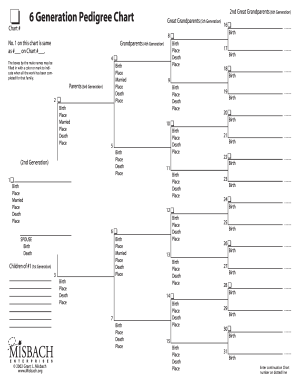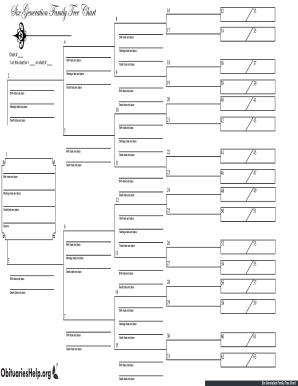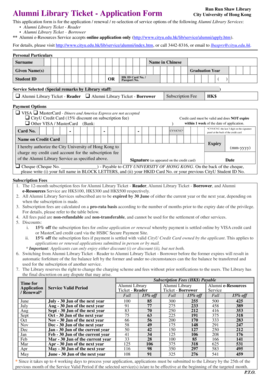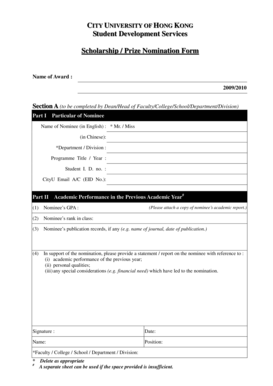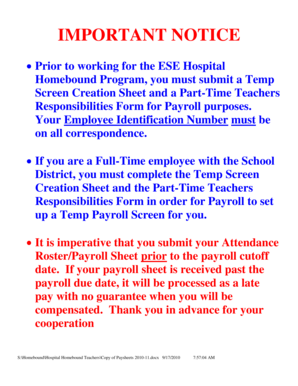
Get the free genealogy forms
Get, Create, Make and Sign



How to edit genealogy forms online
How to fill out genealogy forms

How to fill out genealogy ancestor?
Who needs genealogy ancestor?
Video instructions and help with filling out and completing genealogy forms
Instructions and Help about family tree forms printable
Hello. Today we're going to discuss how to fill out an ancestor chart. Using an ancestor chart is an integral part of recording family research. Also called pedigree chart, the ancestor chart is a great tool for clearly showing a person's ancestral lines. The chart is also helpful in organizing your information-- you can see at a glance where the gaps are and where you need to focus your research. Start with an individual and add that person's direct ancestors. Fathers are recorded on the even-numbered lines and mothers are on the odd-numbered lines. Include names dates and places of the main life events. The most helpful components are dates for birth, marriage, and death, as well as, the location of each life event. There are standard formats for recording information. By following these standards, the data can be interpreted correctly by people with whom you share your research, both now and in the future. Record names in correct order-- first, middle, and last with the surname being in all capital letters. For women, use the maiden name. There are also correct ways for writing dates (day/month/year) and locations (the smallest geography to the largest). Fill out the chart using a pencil until you have documented a particular fact. Then you can write it in pen. Keep your charts organized by numbering them. Don't forget to include the sources you used for your ancestor chart data. The reverse page of our chart is designed for this. Now that you have a chart, you should be able to tell at a glance just where you need to conduct more research. Remember to focus on one question at a time. And, don't forget to enjoy your search and share your findings with your family! Thank you.
Fill printable ancestry charts : Try Risk Free
People Also Ask about genealogy forms
Our user reviews speak for themselves
For pdfFiller’s FAQs
Below is a list of the most common customer questions. If you can’t find an answer to your question, please don’t hesitate to reach out to us.
Fill out your genealogy forms online with pdfFiller!
pdfFiller is an end-to-end solution for managing, creating, and editing documents and forms in the cloud. Save time and hassle by preparing your tax forms online.















